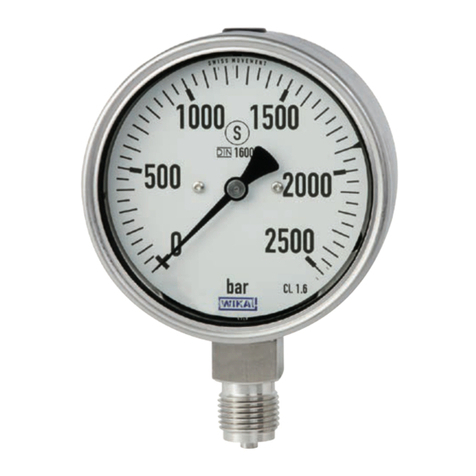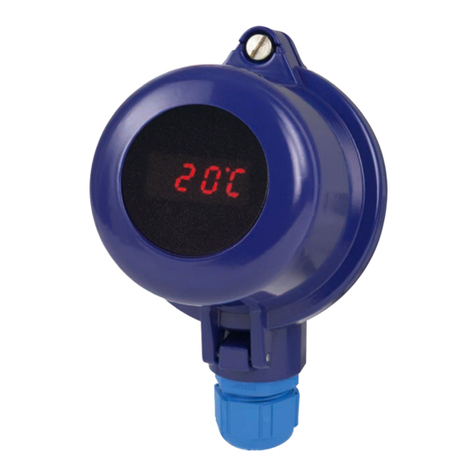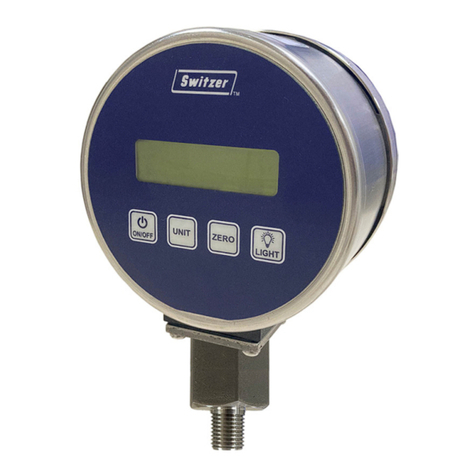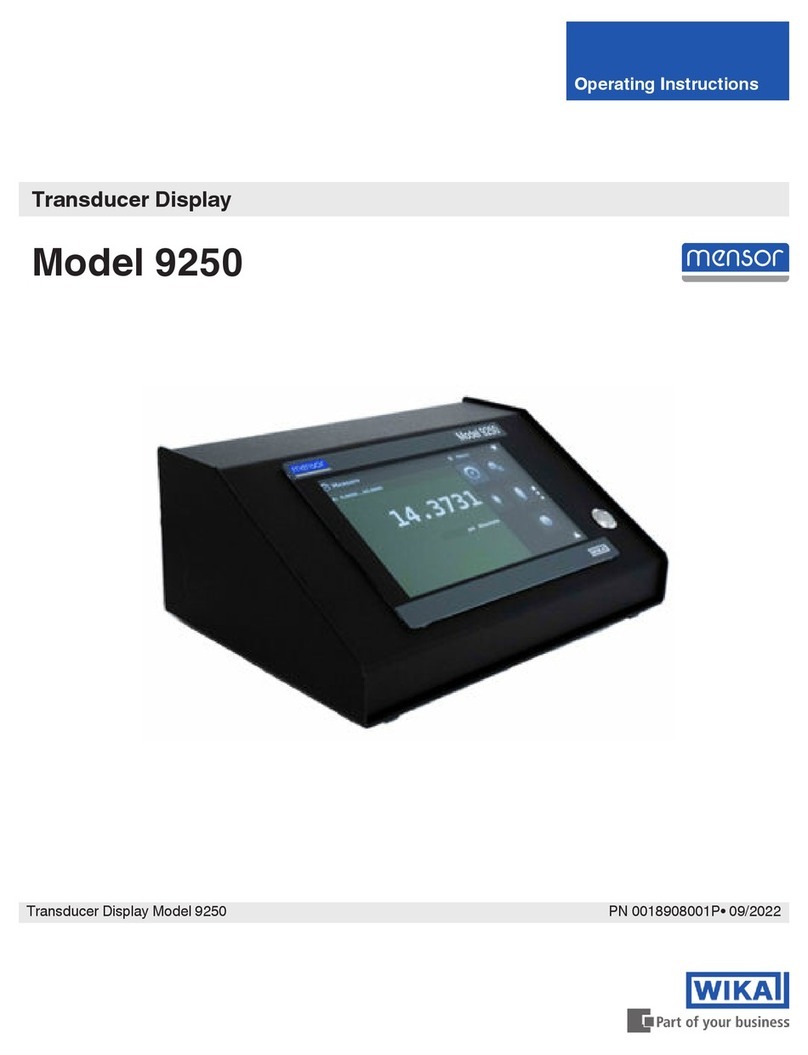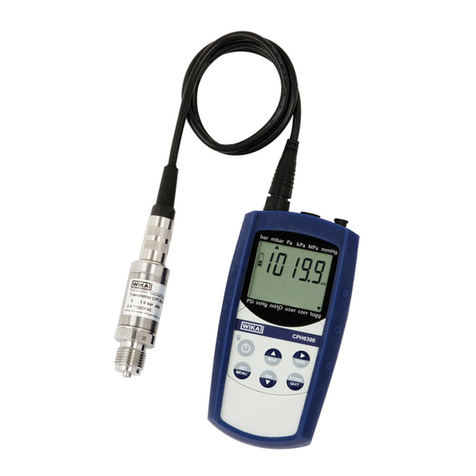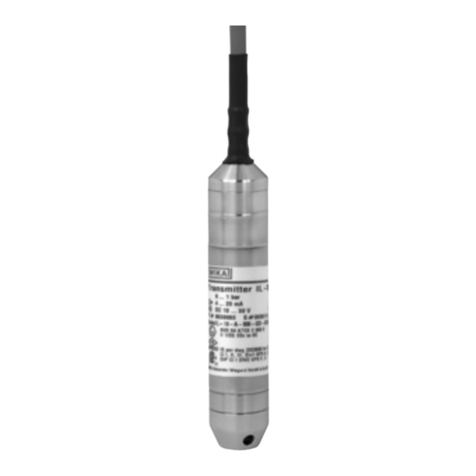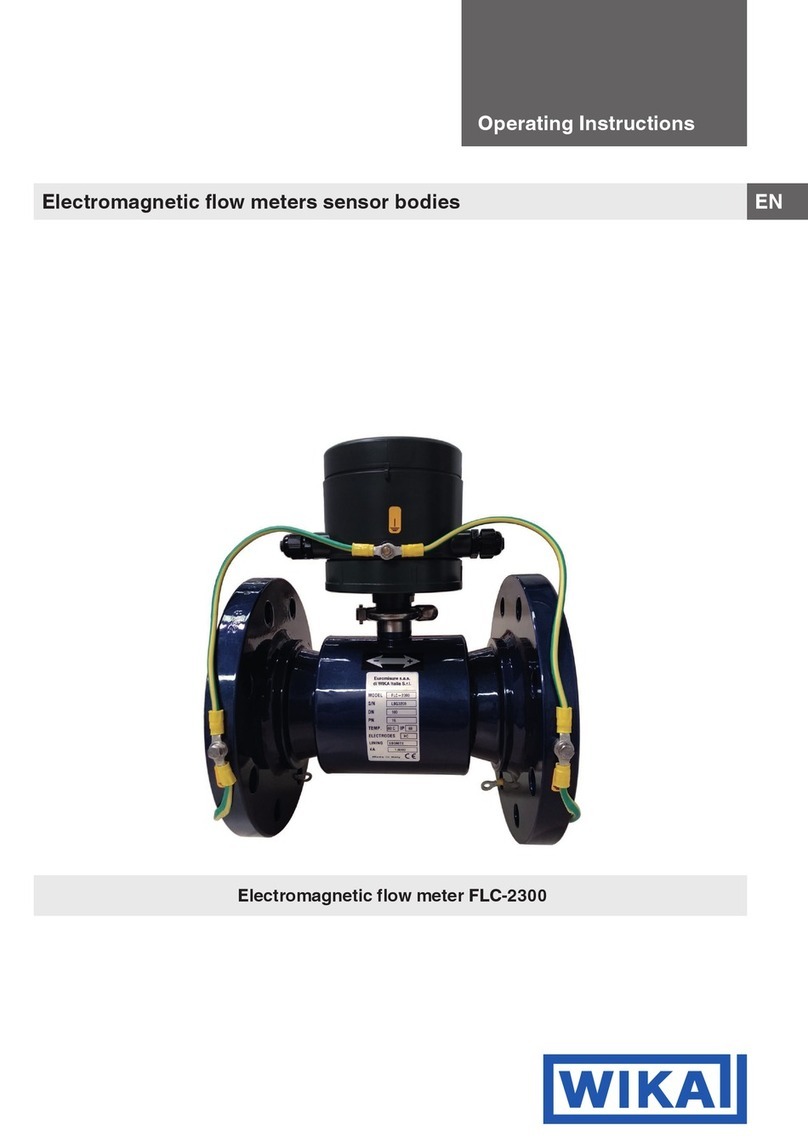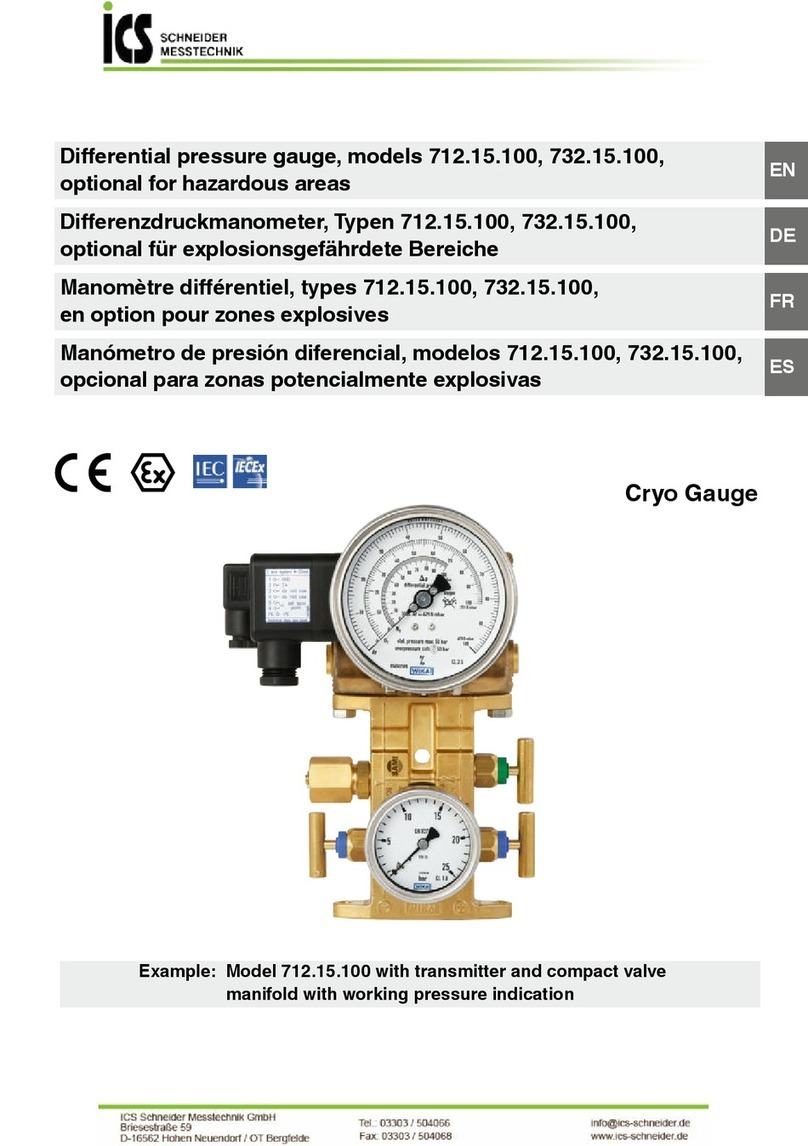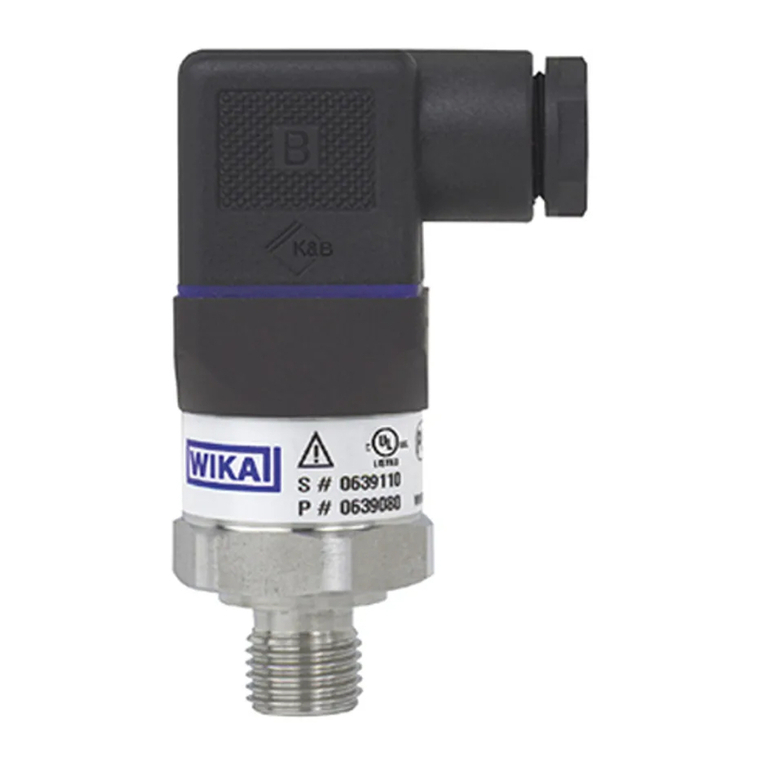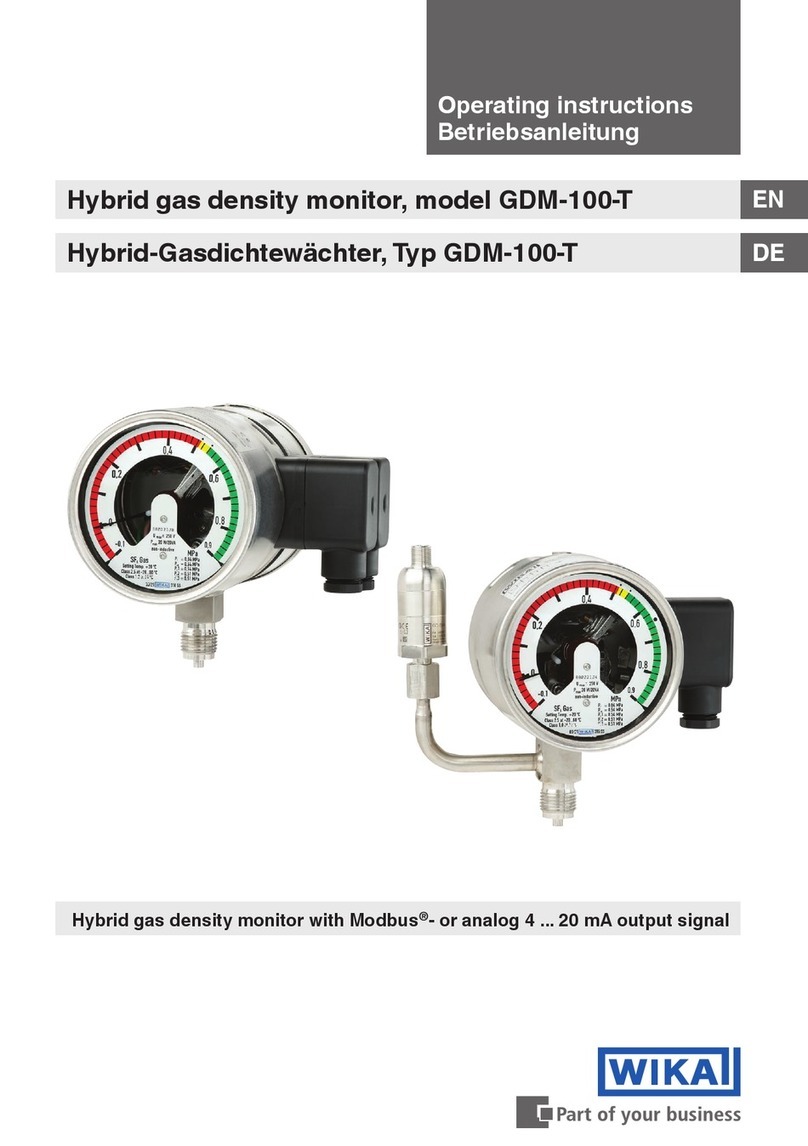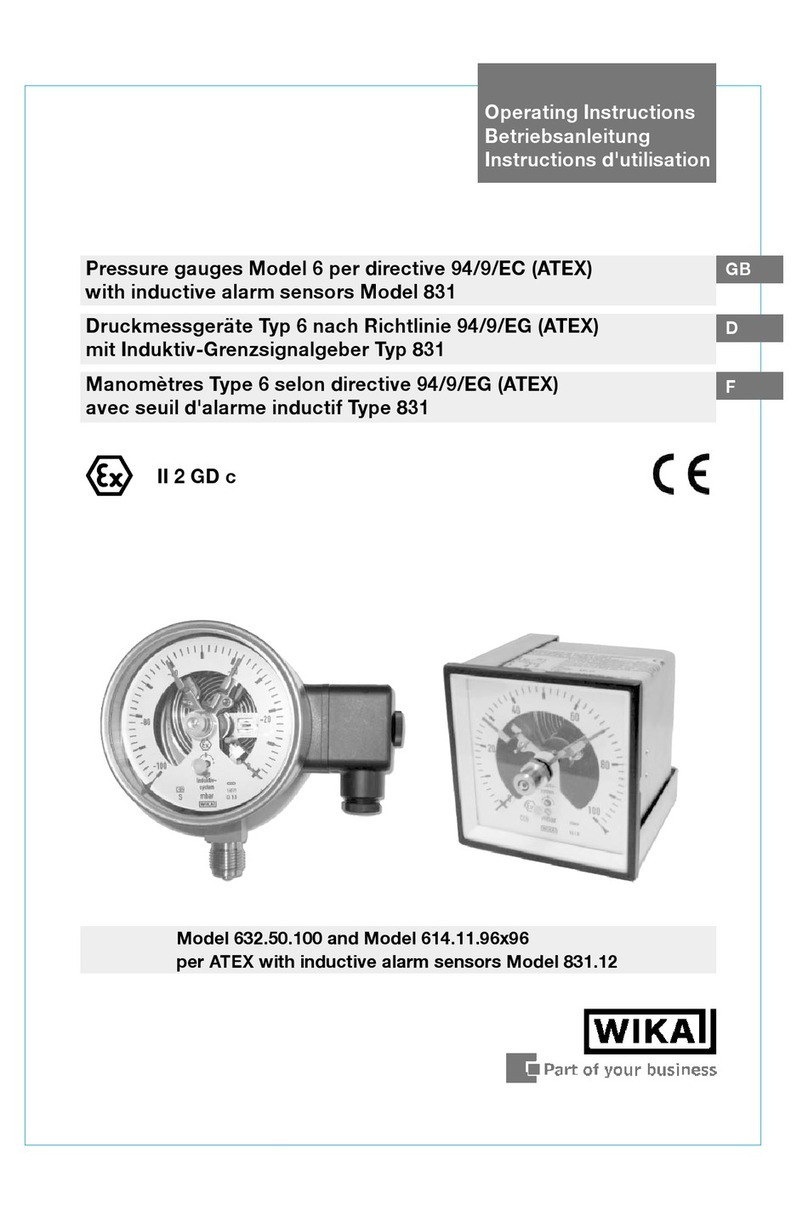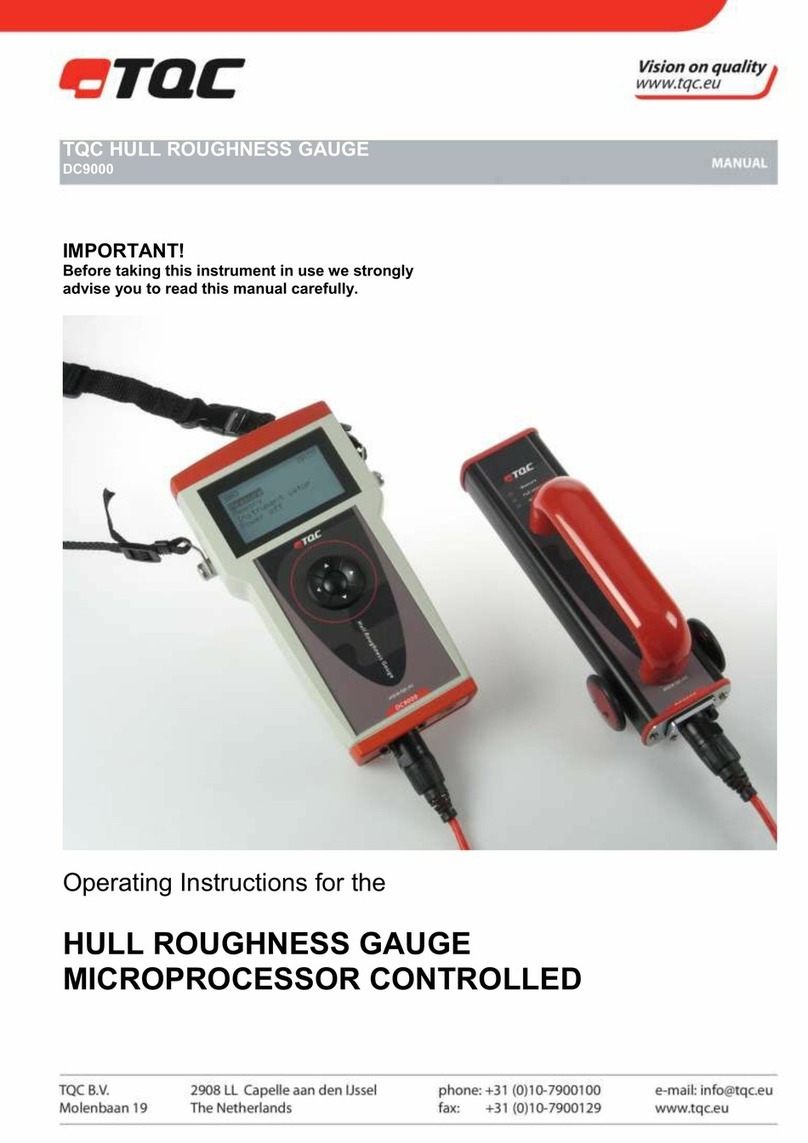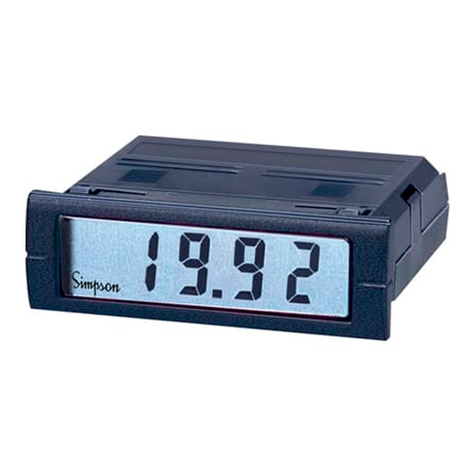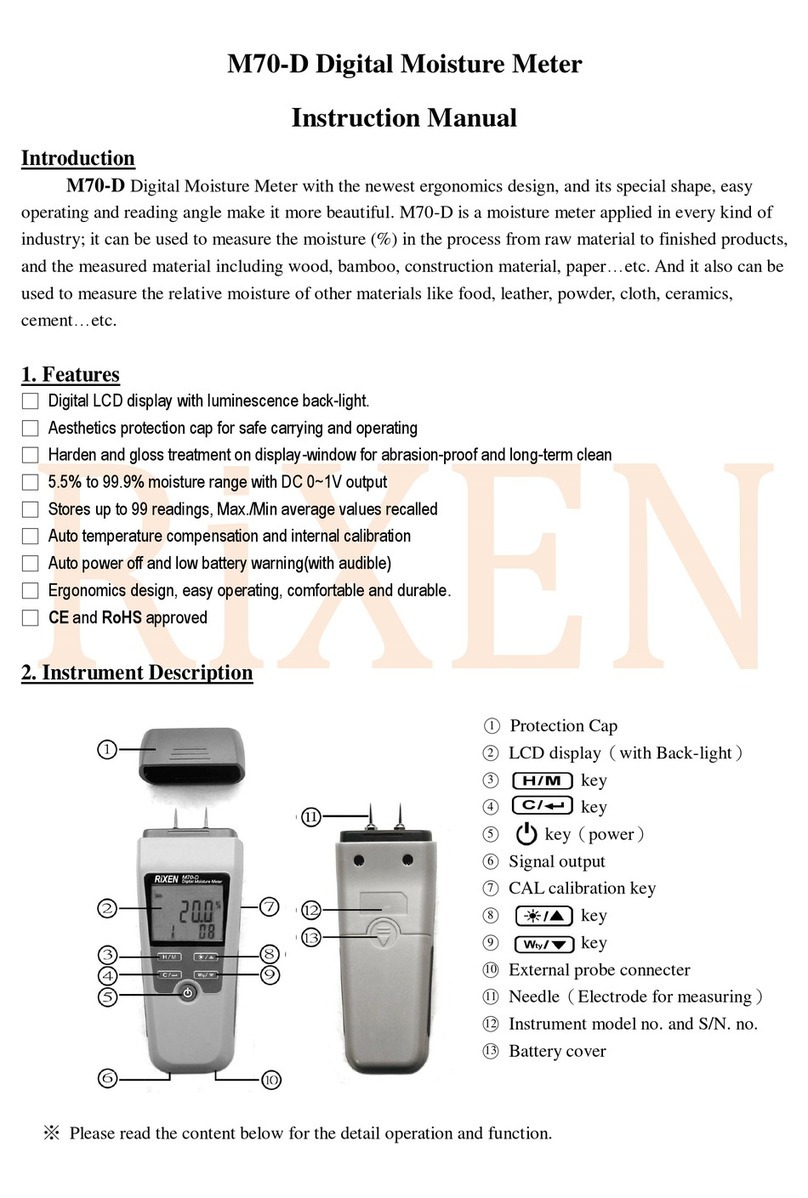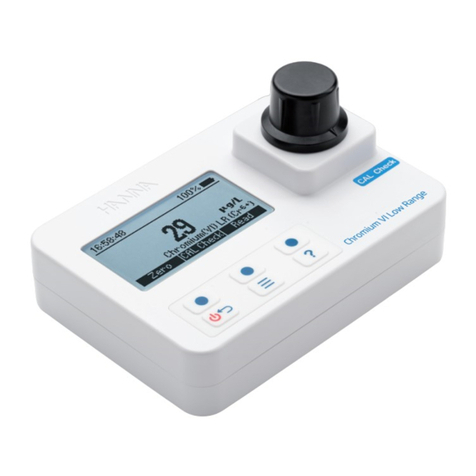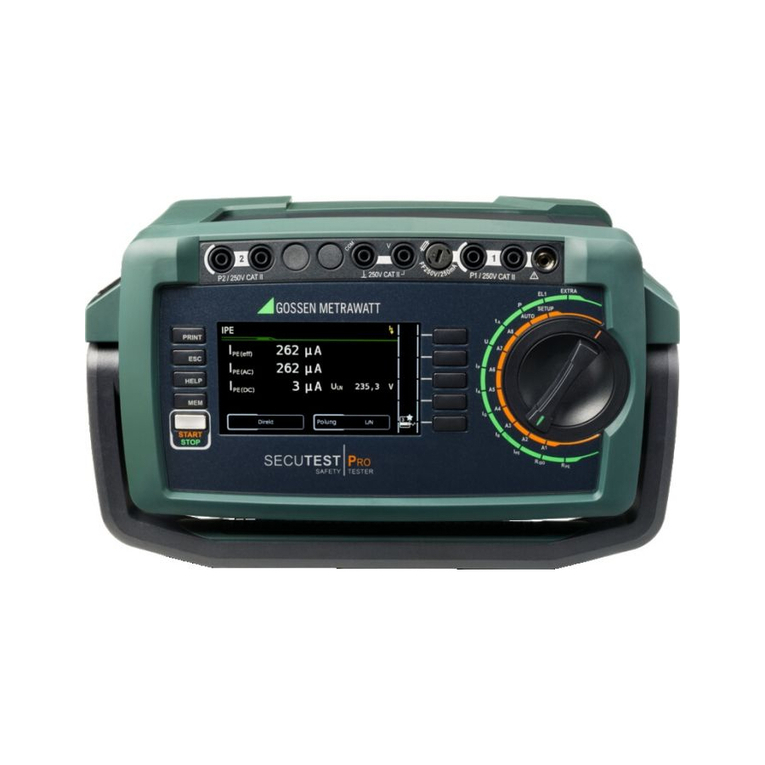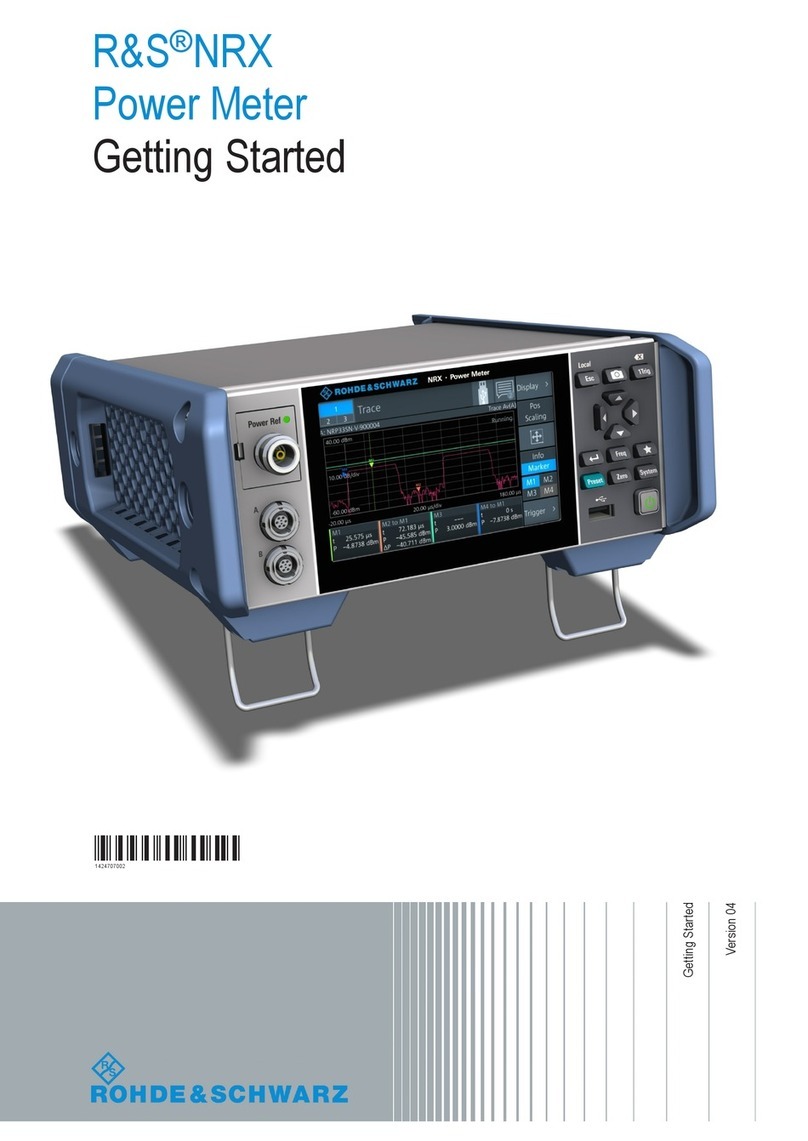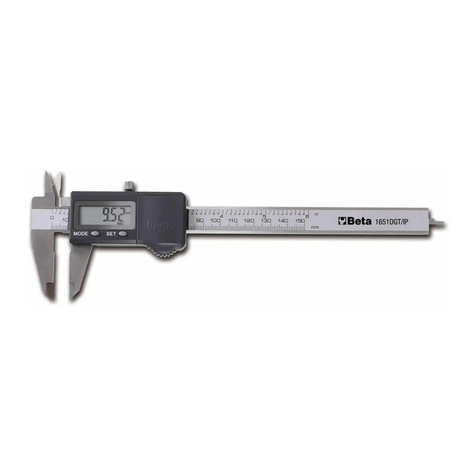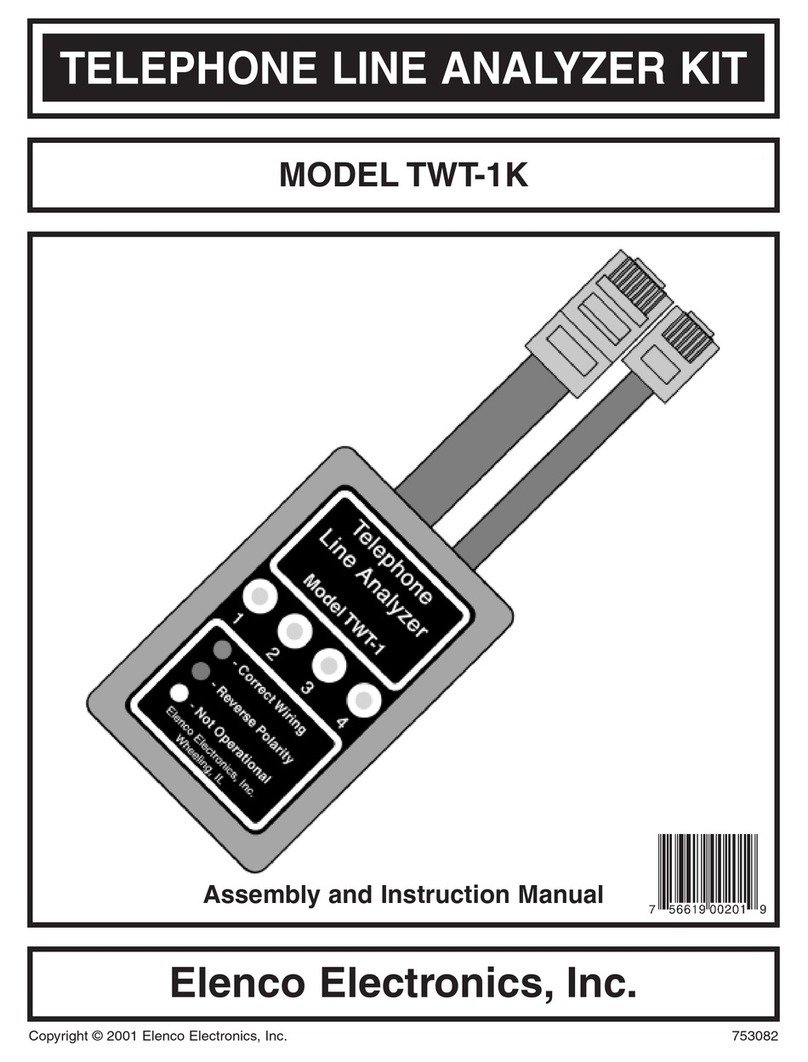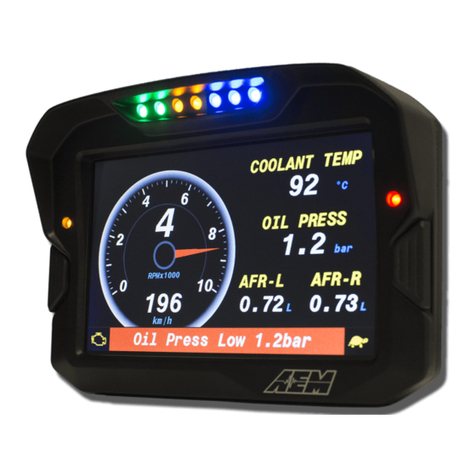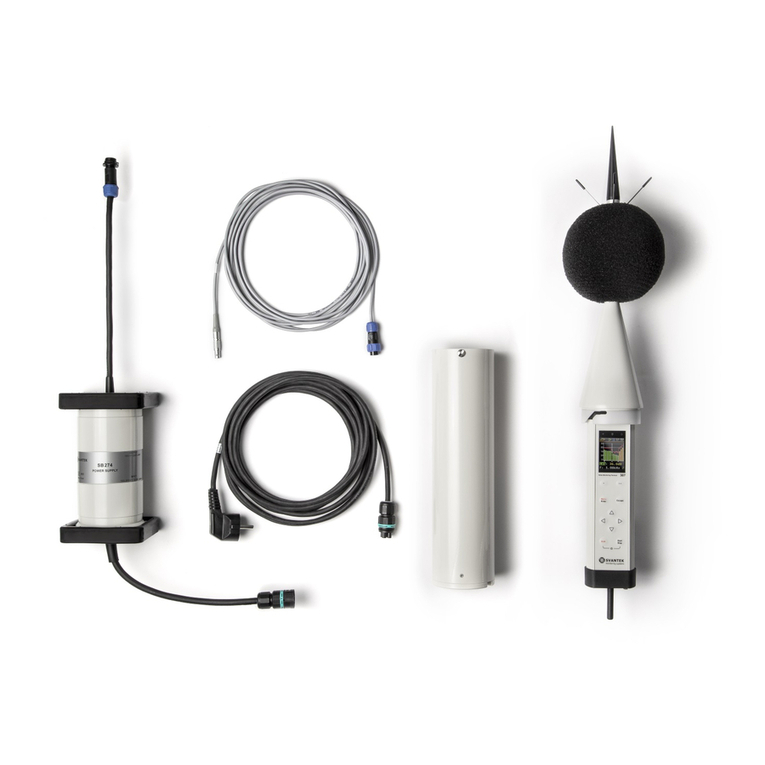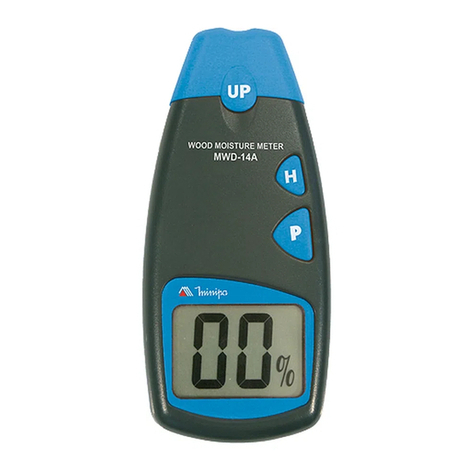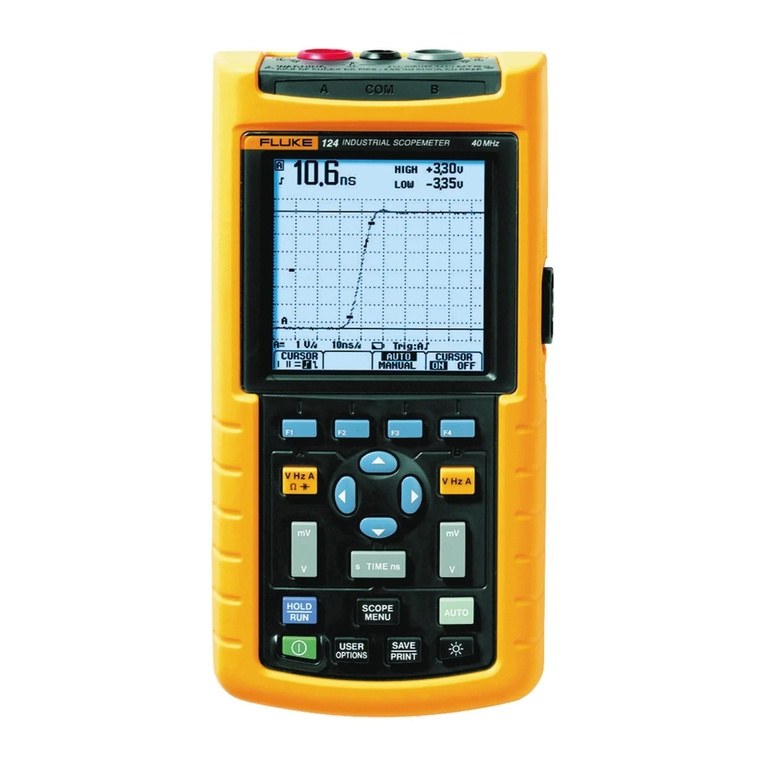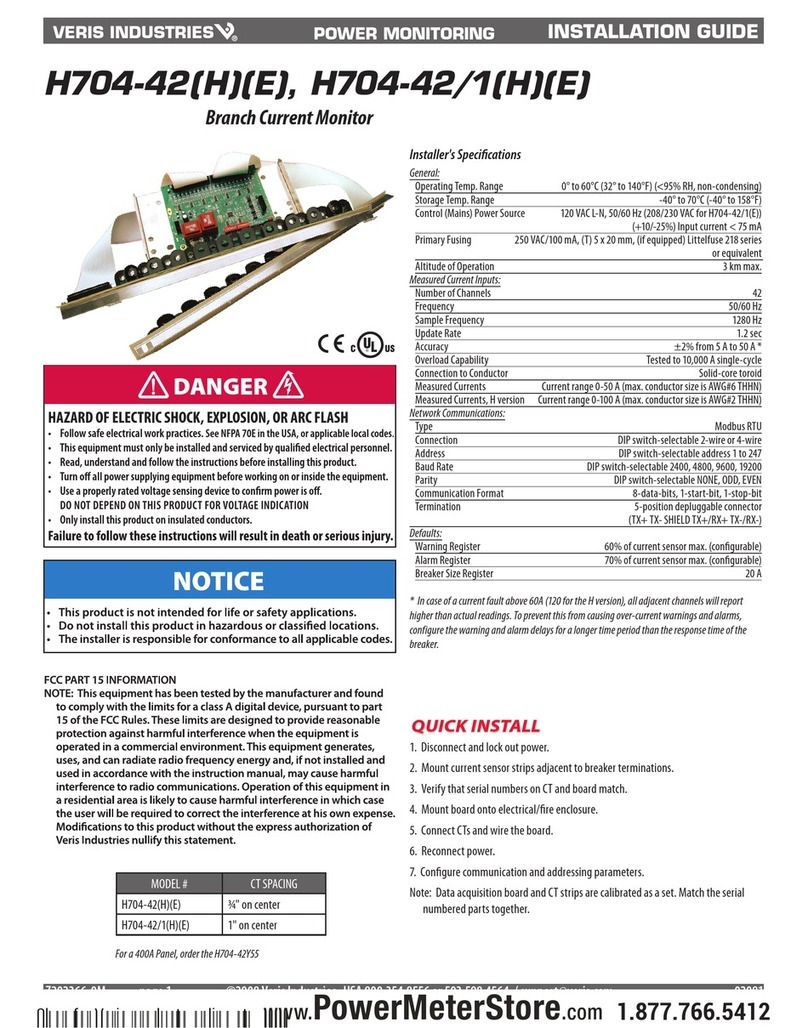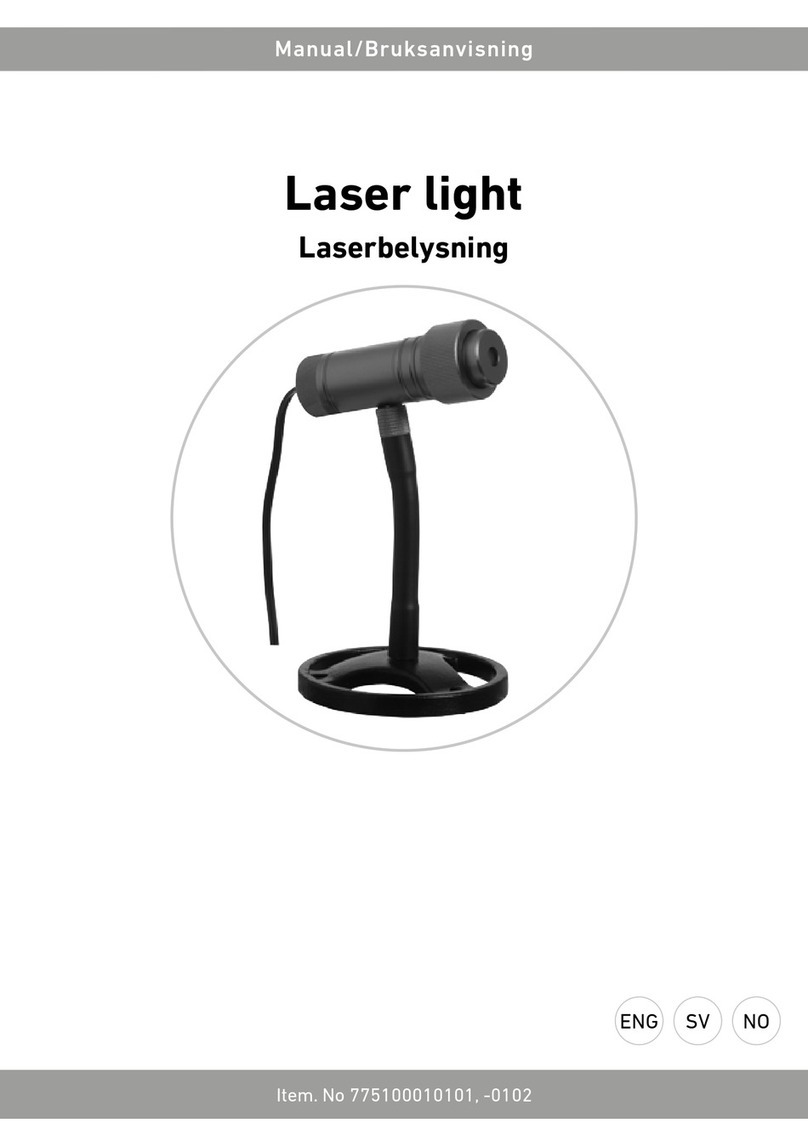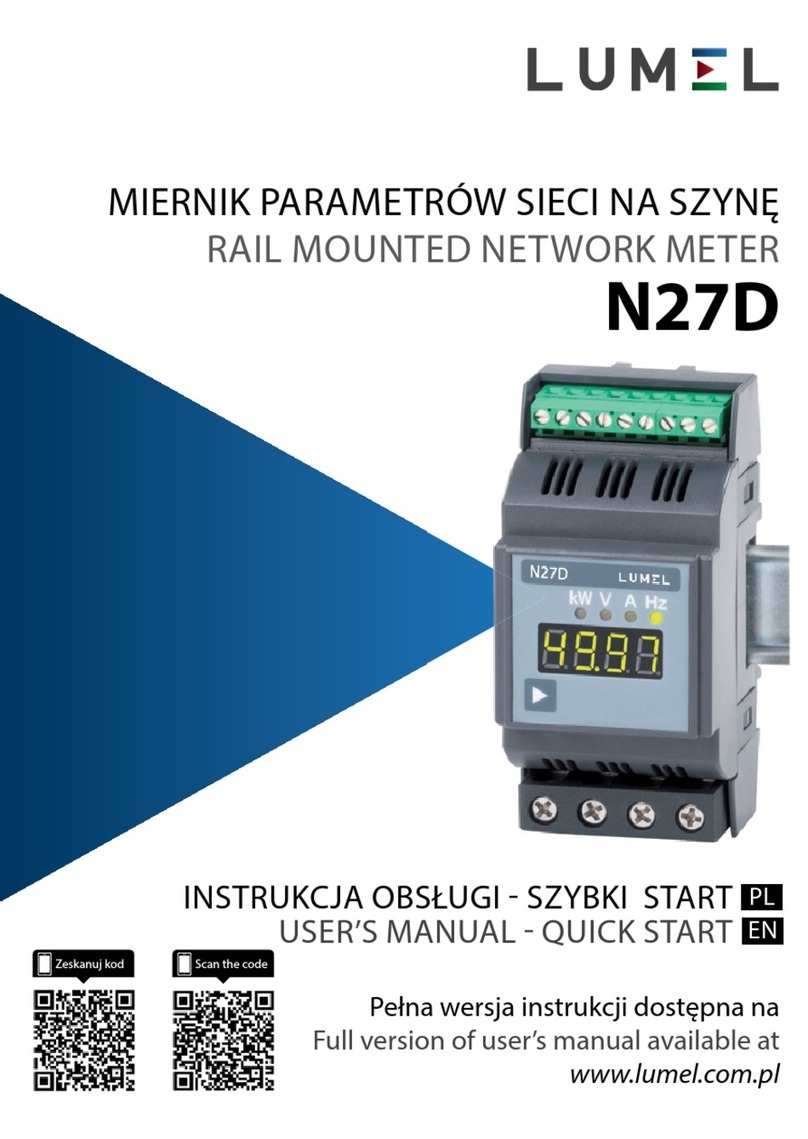WIKA PGU23.100 User manual

Operating instructions
Betriebsanleitung
EN
DE
Rohrfedermanometer zum Anschluss an WIKA-Funkeinheit,
Typen PGU23.100 und PGU26.100
Bourdon tube pressure gauge for connection to WIKA radio
unit, models PGU23.100 and PGU26.100
Bourdon tube pressure gauge, model PGU2x.100

2
14520946.01 02/2023 EN/DE
WIKA operating instructions, models PGU23.100 and PGU26.100
EN
DE
© 02/2023 WIKA Alexander Wiegand SE & Co. KG
All rights reserved. / Alle Rechte vorbehalten.
WIKA®is a registered trademark in various countries.
WIKA®ist eine geschützte Marke in verschiedenen Ländern.
Prior to starting any work, read the operating instructions!
Keep for later use!
Vor Beginn aller Arbeiten Betriebsanleitung lesen!
Zum späteren Gebrauch aufbewahren!
Operating instructions models PGU23.100 and
PGU26.100 Page 3 - 42
Betriebsanleitung Typen PGU23.100 und
PGU26.100 Page 43 - 83

3WIKA operating instructions, models PGU23.100 and PGU26.100
EN
14520946.01 02/2023 EN/DE
Contents
Contents
Declarations of conformity can be found online at www.wika.com.
1. General information 4
2. Design and function 5
2.1 Overview. . . . . . . . . . . . . . . . . . . . . . . . 5
2.2 Description . . . . . . . . . . . . . . . . . . . . . . . 6
2.3 Scope of delivery . . . . . . . . . . . . . . . . . . . . . 7
2.4 Product passport . . . . . . . . . . . . . . . . . . . . . 7
3. Safety 8
3.1 Explanation of symbols . . . . . . . . . . . . . . . . . . . 8
3.2 Intended use . . . . . . . . . . . . . . . . . . . . . . 8
3.3 Improper use . . . . . . . . . . . . . . . . . . . . . . 11
3.4 Responsibility of the operator . . . . . . . . . . . . . . . . . 12
3.5 Personnel qualification . . . . . . . . . . . . . . . . . . . 13
3.6 Personal protective equipment . . . . . . . . . . . . . . . . 14
3.7 Labelling, safety marks . . . . . . . . . . . . . . . . . . .14
3.8 Special conditions for installation and operation (X-conditions) . . . . . 16
3.9 Specifications and temperature limits . . . . . . . . . . . . . . 17
3.10 Certified WIKA radio unit, model NETRIS®3 . . . . . . . . . . . 17
4. Transport, packaging and storage 18
4.1 Transport. . . . . . . . . . . . . . . . . . . . . . . . 18
4.2 Packaging and storage . . . . . . . . . . . . . . . . . . .18
5. Commissioning, operation 19
5.1 Mechanical mounting . . . . . . . . . . . . . . . . . . . 20
5.2 Electrical connection, digital output . . . . . . . . . . . . . . .25
5.3 Commissioning . . . . . . . . . . . . . . . . . . . . . 26
6. Faults 27
7. Maintenance, cleaning and calibration 29
7.1 Maintenance . . . . . . . . . . . . . . . . . . . . . . 29
7.2 Cleaning . . . . . . . . . . . . . . . . . . . . . . . .29
7.3 Calibration . . . . . . . . . . . . . . . . . . . . . . . 30
8. Dismounting, return and disposal 30
8.1 Dismounting . . . . . . . . . . . . . . . . . . . . . . 30
8.2 Return. . . . . . . . . . . . . . . . . . . . . . . . . 32
8.3 Disposal . . . . . . . . . . . . . . . . . . . . . . . .32
9. Specifications 33
10. Accessories 41
Annex: EU declaration of conformity 42

4WIKA operating instructions, models PGU23.100 and PGU26.100
EN
14520946.01 02/2023 EN/DE
1. General information
1. General information
The instrument described in the operating instructions has been manufactured
using state-of-the-art technology. All components are subject to stringent quality and
environmental criteria during production. Our management systems are certified to
ISO 9001 and ISO 14001.
These operating instructions contain important information on handling the instrument.
Working safely requires that all safety instructions and work instructions are observed.
Observe the relevant local accident prevention regulations and general safety regulati-
ons for the instrument's range of use.
The operating instructions are part of the product and must be kept in the immediate
vicinity of the instrument and readily accessible to skilled personnel at any time. Pass
the operating instructions on to the next operator or owner of the instrument.
Skilled personnel must have carefully read and understood the operating instructions
prior to beginning any work.
The general terms and conditions contained in the sales documentation shall apply.
Subject to technical modifications.
Further information:
- Internet address: www.wika.de / www.wika.com
- Relevant data sheet: PV 42.03
- Additional documentation: „Special documentation“ LoRaWAN®communication
specification article number 14579317
- Application consultant: Tel.: +49 9372 132-0
info@wika.de
Supplementary documentation:
Please follow all the documentation included within the scope of delivery.
Before commissioning the instrument, the operating instructions for the
WIKA model NETRIS®3 radio unit, article number 14521664, must also
be observed!

5WIKA operating instructions, models PGU23.100 and PGU26.100
EN
14520946.01 02/2023 EN/DE
2. Design and function
2.1 Overview
1Bourdon tube
2Movement
3Sensor PCB
4Process connection
5Laminated safety glass
6NETRIS®3 plug connection for angular connectors
7Radio unit, model NETRIS®3, for connection type: Angular connector
®3
1. General information / 2. Design and function
Abbreviations, definitions
Bullet
Instruction
1. ... x. Follow the instruction step by step
Result of an instruction
See ... cross-references
UWI Unified WIKA Interface

6WIKA operating instructions, models PGU23.100 and PGU26.100
EN
14520946.01 02/2023 EN/DE
2.2 Description
Through the modular design, the model PGU2x.100 pressure gauge is designed for
operation with the model NETRIS®3 radio unit.The radio unit can be fixed, for example,
directly to the back of the instrument case.
Under the influence of pressure, the pressure elements deform within their elastic limits.
A mechanical movement transfers this deformation into a rotational motion. A magnet on
the pointer shaft rotates proportionally to the instrument pointer as a direct linear function
of the process pressure.The angle sensor contained in the transmitter electronics measu-
res the rotational motion of the magnet in the range 0 ... 270°.The change in angle is
recorded contact-free, and therefore wear-free, and further processed into a digital signal,
which is transmitted to the model NETRIS®3 radio unit.The radio unit ensures the intrin-
sically safe voltage supply for the PGU23.100 and PGU26.100 Bourdon tube pressure
gauges and ensures the transmission of the measured data based on LPWAN® technolo-
gy (“Low Power Wide Area Network”).
The measurement and sending intervals, and also the alarm limits, for particular measu-
red values can be configured over the IIoT platform.
For details on the alarm configuration, see “Special documentation for LoRaWAN®
communication specification”, models PGU23.100 and PGU26.100.
The model PGU2x.100 pressure gauge fulfils safety-related requirements of the relevant
standards and regulations for the on-site indication of the operating pressure of pressure
vessels. The mechanical on-site indication works completely autonomously, i.e. battery-
independent.
Safety version
The model PGU2x.100 is based upon a model 2xx.30 high-quality pressure gauge with a
nominal size of 100, which corresponds to the S3 safety version of the EN 837-1.
Ex version
The models PGU23.100 and PGU26.100 are suitable for use in hazardous areas
2. Design and function

7WIKA operating instructions, models PGU23.100 and PGU26.100
EN
14520946.01 02/2023 EN/DE
2.3 Scope of delivery
Bourdon tube pressure gauge for connection to WIKA radio unit
Operating instructions for Bourdon tube pressure gauges for connection to the WIKA
radio unit NETRIS®3, models PGU23.100 and PGU26.100
Protective cap for threads and protective cap for plug connection
Seal plug connection for angular connector (inserted)
Cross-check scope of delivery with delivery note.
2.4 Product passport
The product passport is a web application where various information about an instrument
can be retrieved by entering the 11-digit alphanumeric serial number.This includes, for
example, instrument configuration, article number, operating instructions, data sheet or
calibration certificates.The product passport can be retrieved from the product page or
directly from the corresponding web application (https://portal.wika.com/serial/).
Web application
2. Design and function

8WIKA operating instructions, models PGU23.100 and PGU26.100
EN
14520946.01 02/2023 EN/DE
3. Safety
3.1 Explanation of symbols
DANGER!
... indicates a directly dangerous situation resulting in serious injury or death,
if not avoided.
WARNING!
... indicates a potentially dangerous situation that can result in serious injury
or death, if not avoided.
CAUTION!
... indicates a potentially dangerous situation that can result in light injuries or
damage to property or the environment, if not avoided.
WARNING!
... indicates a potentially dangerous situation that can result in burns, caused
by hot surfaces or liquids, if not avoided.
DANGER!
... indicates a potentially dangerous situation in the hazardous area that can
result in serious injury or death, if not avoided.
Information
... points out useful tips, recommendations and information for efficient and
trouble-free operation.
3.2 Intended use
The model PGU2x.100 combines a mechanical measuring system with electronic signal
processing and is prepared for connection to the WIKA model NETRIS®3 radio unit.The
instrument is used for measuring pressure in hazardous areas of industrial applications.
The instrument offers many application possibilities for gaseous and liquid aggressive
media that are not highly viscous or crystallising.
Classification per European pressure equipment directive
Instrument type: Pressure accessory without safety function
Media: Liquid or gaseous, group 1 (hazardous)
Maximum allowable pressure PS, see chapter 3.7 “Labelling, safety marks”
Volume of wetted parts: < 1 L
3. Safety

9WIKA operating instructions, models PGU23.100 and PGU26.100
EN
14520946.01 02/2023 EN/DE
The model PGU2x.100 pressure gauge in combination with the model NETRIS®3 radio
unit is used wherever web-based remote monitoring of the process pressure is desired in
addition to on-site indication.
In addition to the pressure value, the instrument temperature is also transmitted digitally.
Due to the position of the temperature probe, which is located on the sensor
circuit board in the pressure gauge case, the instrument tempera-
ture is influenced by the ambient and the process temperature.
Only use the instrument in applications that lie within its technical performance limits (e.g.
temperature limits, material compatibility, ...). In order to achieve an optimal service life
See technical information IN 00.05.
The operator of the plant in which the product is used must ensure the compatibility of the
materials of the wetted parts with the medium used.
The instrument must only be used with media which are not harmful to the wetted parts
over the entire operating range of the instrument. Any change in the state of the matter or
any decomposition of unstable media is not permitted.
The instrument has been designed and built solely for the intended use described here,
and may only be used accordingly.
The technical specifications of the enclosed operating instructions and the operating
instructions for the NETRIS®3 radio unit must be observed. Improper handling or opera-
tion of the instrument outside of its technical specifications requires the instrument to be
taken out of service immediately and inspected by an authorised WIKA service engineer,
see chapter 9 “Specifications”. If the performance limits are exceeded (e.g. EN 837-1
limits) or if there are visible changes to the instrument, it must be replaced.
WARNING!
Overload limit of the instrument
Pressure values above the overload limit can lead to irreversible damage of
the measuring instrument.
The overload limit must never be exceeded, even when failures occur in
the end-use application.
The manufacturer shall not be liable for claims of any type based on operation contrary to
the intended use.
3. Safety

10 WIKA operating instructions, models PGU23.100 and PGU26.100
EN
14520946.01 02/2023 EN/DE
Certificates and applied standards
EU-Type Examination Certificate Certificate IECEx
BVS 20 ATEX E 099 X IECEx BVS 22.0036X
EN IEC 60079-0:2018 IEC 60079-0:2017 (edition 7.0)
EN 60079-11:2012 IEC 60079-11:2011 (edition 6.0)
Assembly
For the application limits of the assembly, compliance with the specifications of the WIKA
radio unit and the specifications of the models PGU2x.100 is required.The permissible
ambient temperature range of the assembly is determined by the instrument with the
lowest temperature range.
The PGU23.100 and PGU26.100 measuring instruments are certified for use in areas
that require EPL Gb (zone 1). The NETRIS®3 radio unit is certified for use in areas that
require EPL Ga (zone 0). The assembly of these two instruments may only be operated in
areas that require EPL Gb (zone 1).
DANGER!
Injuries through improper use
Failure to follow instructions for the assembly can result in death or serious
injury.
Assessment of operability by skilled personnel.
The remote monitoring of the process pressure via radio transmission is only suitable for
non-critical and non-safety-relevant applications.
The remote monitoring function must not be used for control purposes, as it
cannot be guaranteed that data packets won't be lost during radio transmis-
sion.
3. Safety

11WIKA operating instructions, models PGU23.100 and PGU26.100
EN
14520946.01 02/2023 EN/DE
3.3 Improper use
WARNING!
Changes to the instrument
Changes to the instrument can lead to hazardous situations and injuries.
Refrain from unauthorised modifications or changes to the instrument.
The instrument must only be used for the usage described here.
Only use the approved radio unit, see chapter 3.10 “Certified WIKA radio
unit, model NETRIS®3”.
The maximum cable length of 3 metres to the radio unit must be observed.
WARNING!
Injuries through improper use
Improper use of the instrument can lead to hazardous situations and injuries.
Refrain from unauthorised modifications to the instrument.
Once the instrument has been assembled, do not carry it by the radio unit.
Do not use the instrument for abrasive and highly viscous or crystallising
media.
Any use beyond or different to the intended use is considered as improper use.
The instrument must not be used as part of a safety or emergency shutdown device
(safety accessory).
The instrument temperature, which is output digitally, is a mixture of ambient and process
temperature and is therefore not suitable for an exact temperature determination.
If the lower scale value or full scale value are exceeded, then the digitally transmitted
value is no longer reliable.
Protection against external impact
Avoid any kind of external impact. External impacts can generate sparks through friction
processes between different materials.
Explosive atmosphere consisting of hybrid mixtures
The instruments must not be used in areas in which an atmosphere consisting of explosi-
ve hybrid mixtures (dusts mixed with gases) can occur.
Handling of materials
Avoid exposing the instrument to any substances or ambient conditions that could
negatively affect the instrument and the materials used. Avoid handling substances that
are liable to spontaneous combustion. For a list of the materials used, see chapter 9
“Specifications”.
3. Safety

12 WIKA operating instructions, models PGU23.100 and PGU26.100
EN
14520946.01 02/2023 EN/DE
3.4 Responsibility of the operator
The instrument is used in the industrial sector.The operator is therefore responsible for
legal obligations regarding safety at work.
The safety instructions within these operating instructions, as well as the safety, accident
prevention and environmental protection regulations for the application area must be
maintained.
The operator is obliged to maintain the product label in a legible condition.The legibility of
the marking must be observed during time in use but at least during inspection periods of
three years. If any harm of the legibility is found please contact the manufacturer to renew
the marking.
To ensure safe working on the instrument, the operating company must ensure
that suitable first-aid equipment is available and aid is provided whenever required.
that the operating personnel are regularly instructed in all topics regarding work safety,
first aid and environmental protection and know the operating instructions and, in parti-
cular, the safety instructions contained therein.
that the instrument is suitable for the particular application in accordance with its
intended use.
that personal protective equipment is available.
On the wetted parts of the instrument, small residual amounts of the adjust-
ment medium (e.g. compressed air, water, oil) can adhere from production.
With increased requirements for technical cleanliness, suitability for the
application must be checked by the operator before commissioning.
Liquid media with the property of changing the volume during solidification
can damage the measuring system (e.g. water if it falls below the freezing
point).
All accessories (e.g. valves or attachment components) must be assessed in
combination with the delivered instruments by the end user. Particularly the
requirements of grounding and prevention of electrostatic charges must be
considered.
For the safety of the system, the operator is obliged to carry out an ignition source analy-
sis.The responsibility for classification of zones lies with the plant manager and not the
manufacturer/supplier of the equipment.
These ignition sources must be taken into account for the instrument:
Hot surfaces
The surface of the instrument can heat up due to the temperature of the process medium.
This depends on the installation situation and must be taken into account by the operator.
3. Safety

13WIKA operating instructions, models PGU23.100 and PGU26.100
EN
14520946.01 02/2023 EN/DE
Mechanically generated sparks
Mechanically generated sparks are a potential ignition source. If the materials used
exceed a total mass percentage of 7.5 % magnesium, titanium and zirconium, the opera-
tor must take appropriate protective measures.
Static electricity
To avoid electrostatic charging, the instrument must be included in the equipotential
bonding of the system. This can be done via the process connection or other suitable
measures.
Metal components of the instruments (e.g.TAG plates) must be included in the equipo-
tential bonding of the system during installation and operation.
Adiabatic compression and shock waves
With gaseous media, the temperature may increase as a result of compression warming.
In these cases it may be necessary to throttle the rate of change of pressure or reduce
the permissible medium temperature.
Chemical reactions
The operator must ensure that chemical reactions between wetted parts, process
medium and environment are excluded.The materials used can be found in the instru-
ment labelling, see chapter 3.7 “Labelling, safety marks” and chapter 9 “Specifications”.
3.5 Personnel qualification
WARNING!
Risk of injury should qualification be insufficient
Improper handling can result in considerable injury and damage to property.
The activities described in these operating instructions may only be
carried out by skilled personnel who have the qualifications described
below.
Skilled personnel
Skilled personnel, authorised by the operator, are understood to be personnel who,
based on their technical training, knowledge of measurement and control technology and
on their experience and knowledge of country-specific regulations, current standards and
directives, are capable of carrying out the work described and independently recognising
potential hazards.
Special knowledge for working with instruments for hazardous areas:
The skilled personnel must have knowledge of ignition protection types, regulations and
provisions for equipment in hazardous areas.
Special operating conditions require further appropriate knowledge, e.g. of aggressive
media.
3. Safety

14 WIKA operating instructions, models PGU23.100 and PGU26.100
EN
14520946.01 02/2023 EN/DE
3. Safety
WARNING!
Special hazards with hazardous media
Upon contact with hazardous media such (e.g. oxygen, acetylene, flamma-
ble or toxic substances) and also with refrigeration plants, compressors
etc., there is a danger of physical injuries and damage to property and the
environment.
For these media, in addition to all standard regulations, the appropriate
existing codes or regulations must also be followed.
3.6 Personal protective equipment
The personal protective equipment is designed to protect the skilled personnel from
hazards that could impair their safety or health during work.When carrying out the various
tasks on and with the instrument, the skilled personnel must wear personal protective
equipment.
The requisite personal protective equipment must be provided by the operating company.
3.7 Labelling, safety marks
Dial (example)
1Instruments with this marking correspond to the safety version “S3” with solid baffle wall (Solid-
front) and blow-out back
2Material of wetted parts
3Identifying mark for steady load capacity
4Full scale value
5Accuracy class
6Serial number
7QR code with hyperlink, see chapter 2.4 “Product passport”
8Lower scale value
123456789
Cl. 1.0bar
316L
6
5
4
3
2
1
0
S
W
I
S
S
M
O
V
E
M
E
N
T
S
1
2
4
5
6
7
83

15WIKA operating instructions, models PGU23.100 and PGU26.100
EN
14520946.01 02/2023 EN/DE
3. Safety
Product label, model PGU2x.100 (example)
Warning label for internal pressure
compensation (where applicable)
Additional label “liquid filling” (where
applicable)
1Model
2Maximum allowable pressure PS
3Permissible ambient temperature
4Conformity marking + identification number of the notified or approved body
5Date of manufacture
6Serial number
7Article number
8Certificate number and ignition protection type
9Measuring range
Symbols
Before mounting and commissioning the instrument, ensure you read the
operating instructions!
Do not dispose of with household waste. Ensure a proper disposal in
accordance with national regulations.
4
5
32
6
7
8
9
1

16 WIKA operating instructions, models PGU23.100 and PGU26.100
EN
14520946.01 02/2023 EN/DE
3. Safety
3.8 Special conditions for installation and operation (X-conditions)
Due to separation requirements of IEC 60079-11, the IS-circuit and the enclosure shall
be considered as being galvanically connected. The functional separation is ensured.The
gauge shall be included in the equipotential bonding / grounding of the application via
process connection.
DANGER!
Danger to life due to loss of explosion protection
Non-observance of these instructions and their contents may result in the
loss of explosion protection.
Observe the safety instructions in this chapter and further explosion
protection instructions in these operating instructions.
Observe the information given in the applicable EU-type Examination
Certificate and the relevant country-specific regulations for installation and
use in hazardous areas (e.g. IEC 60079-14).
Check whether the equipment protection level is suitable for the applica-
tion.
DANGER!
Danger to life through use in incorrect Ex area
In addition, observe the Ex marking of the connected WIKA-radio unit
NETRIS®3.
The NETRIS®3 radio unit is certified for use in areas that require EPL Ga
(zone 0).The assembly of these two instruments may only be operated in
areas that require EPL Gb (zone 1).
WARNING!
Defective installation
It is imperative that the application conditions and safety-related instructions
of the operating instructions are followed.
The end user must ensure that the instrument is connected to the equipo-
tential bonding of the end-use application via the process connection.
Instrument filling
The filling/refilling of instruments leads to a loss of the explosion protection and can lead
to damage to the instrument.

17WIKA operating instructions, models PGU23.100 and PGU26.100
EN
14520946.01 02/2023 EN/DE
3. Safety
3.9 Specifications and temperature limits
Ingress protection per IEC/EN 60529
For information on the ingress protection of the respective instrument, see chapter 9
“Specifications”. For the Ex assessment, IP20 ingress protection was assumed.
Permissible temperature range
For determining the maximum temperature at the instrument, besides the medium tempe-
rature also other influences such as the ambient temperature and, if applicable, the solar
irradiation must be taken into account.
Temperature load
When mounting the instrument it must be ensured that, taking into consideration the
influence of convection and heat radiation, no deviation above or below the permissible
ambient and medium temperatures can occur.
The permissible temperature ranges must not be exceeded at the instrument either. If
necessary, measures for cooling (e.g. syphon, instrumentation valve) have to be taken.
The permissible medium temperature does not only depend on the instrument design,
but also on the ignition temperature of the surrounding gases, vapours or dusts. Both
aspects have to be taken into account, see chapter 9 “Specifications”
3.10 Certified WIKA radio unit, model NETRIS®3
Only the NETRIS®3 certified radio unit is approved for connection to the model
PGU2x.100 Bourdon tube pressure gauge with digital interface. No other radio unit may
be used for an assembly.
For a detailed description of the battery-operated, certified instrument, see the opera-
ting instructions for the model NETRIS®3, article number 14521664!
DANGER!
Danger to life due to loss of explosion protection
In addition, observe the Ex marking of the connected radio unit.
Only use the certified radio unit!

18 WIKA operating instructions, models PGU23.100 and PGU26.100
EN
14520946.01 02/2023 EN/DE
4. Transport, packaging and storage
4.1 Transport
Check the instrument for any damage that may have been caused by transport.
Obvious damage must be reported immediately.
CAUTION!
Damage through improper transport
With improper transport, a high level of damage to property can occur.
Once the instrument has been assembled, do not carry it by the radio unit!
When unloading packed goods upon delivery as well as during internal
transport, proceed carefully and observe the symbols on the packaging.
With internal transport, observe the instructions in chapter 4.2 “Packaging
and storage”.
If the instrument is transported from a cold into a warm environment, the formation of
condensation may result in instrument malfunction. Before putting it back into operation,
wait for the instrument temperature and the room temperature to equalise.
Shocks can cause small bubbles to form in the fill fluid of filled instruments.
This has no effect on the function of the instrument.
4.2 Packaging and storage
Do not remove packaging and other protective elements (e.g. protective cap) until just
before mounting. Make sure that this is done in a non-hazardous area and in a dry
environment.
Permissible conditions at the place of storage:
Storage temperature: -40 ... +60 °C [-40 ... +140 °F]
Avoid exposure to the following factors:
Direct sunlight or proximity to hot objects
Mechanical vibration, mechanical shock (putting it down hard)
Soot, vapour, dust and corrosive gases
Hazardous environments, flammable atmospheres
Store the instrument in its original packaging in a location that fulfils the conditions listed
above. If the original packaging is not available, pack and store the instrument as descri-
bed below:
1. Wrap the instrument in an anti-static plastic film.
2. Place the instrument, along with the shock-absorbent material, in the packaging.
3. If stored for a prolonged period of time (more than 30 days), place a bag containing a
desiccant inside the packaging.
4. Transport, packaging and storage

19WIKA operating instructions, models PGU23.100 and PGU26.100
EN
14520946.01 02/2023 EN/DE
Interim storage after assembly
In order to protect the battery when storing an already activated radio unit for
a longer period of time, the radio unit can be deactivated again.
For details, see operating instructions of the model NETRIS®3 radio unit.
5. Commissioning, operation
Personnel: Skilled personnel
Before installation, commissioning and operation, ensure that the appropriate instrument
has been selected in terms of scale range, design, explosion protection and specific
measuring conditions.
WARNING!
Physical injury
When commissioning, there is a danger from aggressive media and high
pressures.
Observe the information in the material safety data sheet for the corres-
ponding medium.
Before connecting to a vessel, pipeline or system, depressurise them.
WARNING!
Physical injuries and damage to property and the environment caused
by hazardous media
Upon contact with hazardous media (e.g. oxygen, acetylene, flammable or
toxic substances), harmful media (e.g. corrosive, toxic, carcinogenic, radioac-
tive), and also with refrigeration plants and compressors, there is a danger of
physical injuries and damage to property and the environment.
Should a failure occur, aggressive media with extremely high temperature
and under high pressure or vacuum may be present at the instrument.
For these media, in addition to all standard regulations, the appropriate
existing codes or regulations must also be followed.
Wear the requisite protective equipment.
4. Transport, packaging ... / 5. Commissioning, operation

20 WIKA operating instructions, models PGU23.100 and PGU26.100
EN
14520946.01 02/2023 EN/DE
WARNING!
Physical injuries and damage to property and the environment caused
by media escaping under high pressure
With the pressurisation of the instrument, as a result of poor sealing of the
process connection, media under high pressure can escape. Due to the high
energy of the media that can escape in the event of a failure, the possibility of
physical injuries and damage to property exists.
The sealing of the process connection must be carried out expertly and
checked for leak tightness.
WARNING!
Physical injuries and damage to property and the environment caused
by the back blowing out in the event of a failure
Due to the high energy in the back, if it is blown out in the event of a failure,
there is a risk of physical injuries or damage to property through the ejected
back and the media that would then escape.
It must be ensured that at no time can personnel or objects be at the rear
of the instrument.
WARNING!
Damage to the instrument through electrostatic discharge
Improper handling of electrical components can damage or destroy them.
Before mounting, touch a grounded metal object (e.g. radiator, pipes). This
dissipates static charges from the body.
Only remove the protective cap of the connector immediately before instal-
lation in a non-hazardous area and in a dry environment, making sure that
there is sufficient ESD protection (e.g. ESD clothing). Do not touch the
pins of the now open connector.
5.1 Mechanical mounting
CAUTION!
Damage to the instrument
In order to prevent any damage to the instrument, observe the following:
The instrument must not be subjected to any mechanical loading (e.g. use
as a climbing aid, support for objects).
Make sure the threaded connections and sealing faces are clean and
undamaged.
The instrument should be installed in such a way that process-related
electrostatic charges (e.g. caused by flowing media) can be excluded.
The connector pins must not come into contact with any moisture.
5. Commissioning, operation
This manual suits for next models
1
Table of contents
Languages:
Other WIKA Measuring Instrument manuals
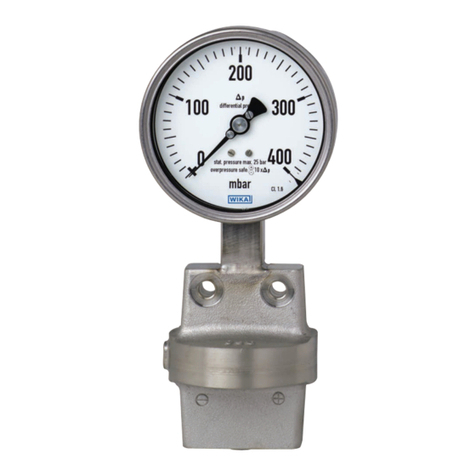
WIKA
WIKA 732.14.100 per ATEX User manual
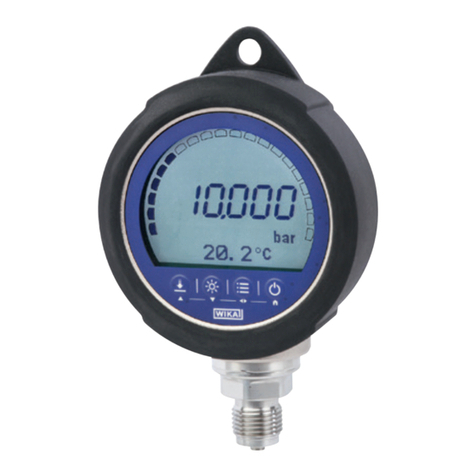
WIKA
WIKA CPG1500 User manual
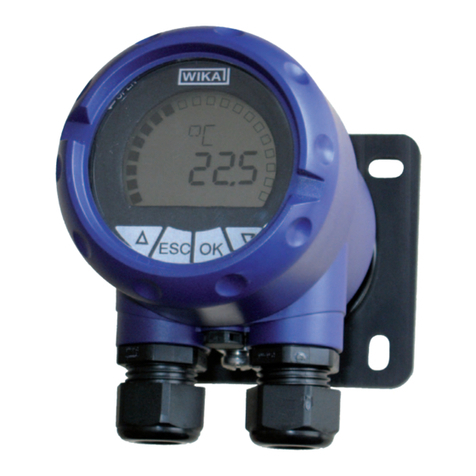
WIKA
WIKA DIH50-F User manual
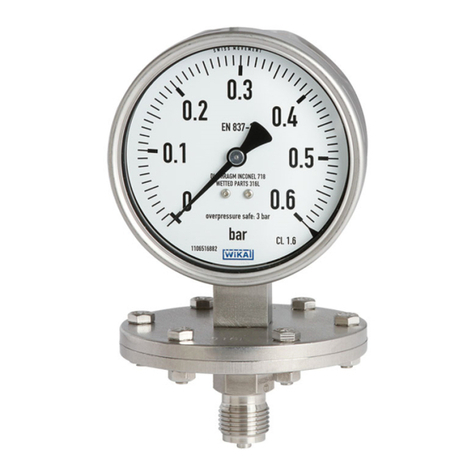
WIKA
WIKA 4 User manual
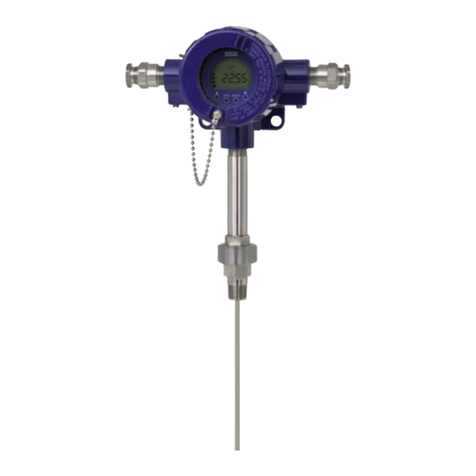
WIKA
WIKA TR12 Series Operating instructions

WIKA
WIKA 712.15.160 User manual
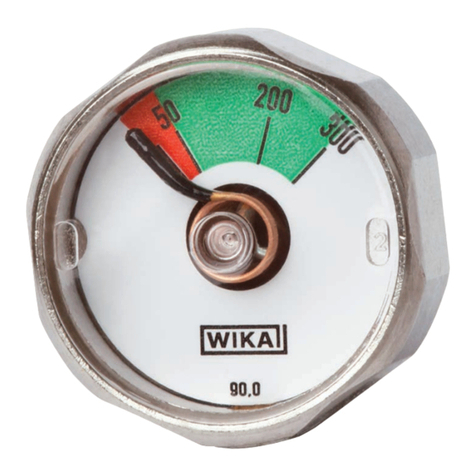
WIKA
WIKA 116.18.02 Series User manual
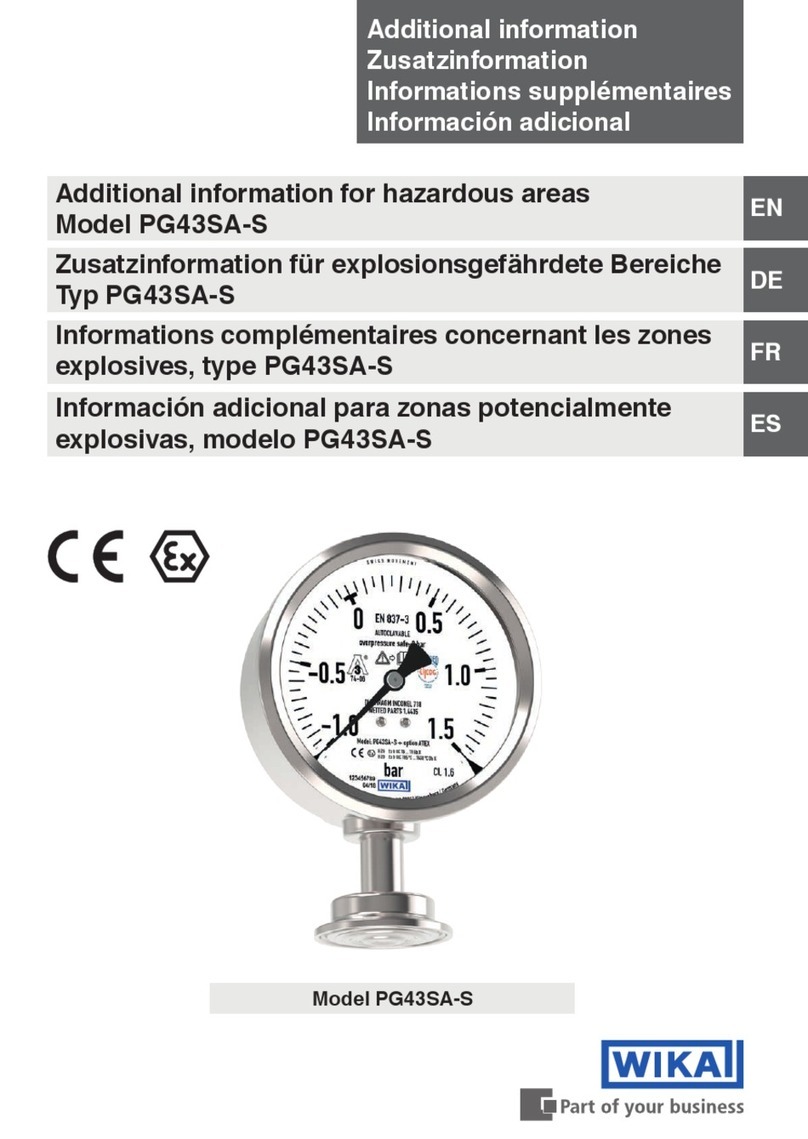
WIKA
WIKA PG43SA-S Installation manual

WIKA
WIKA PGW23.100.11 User manual
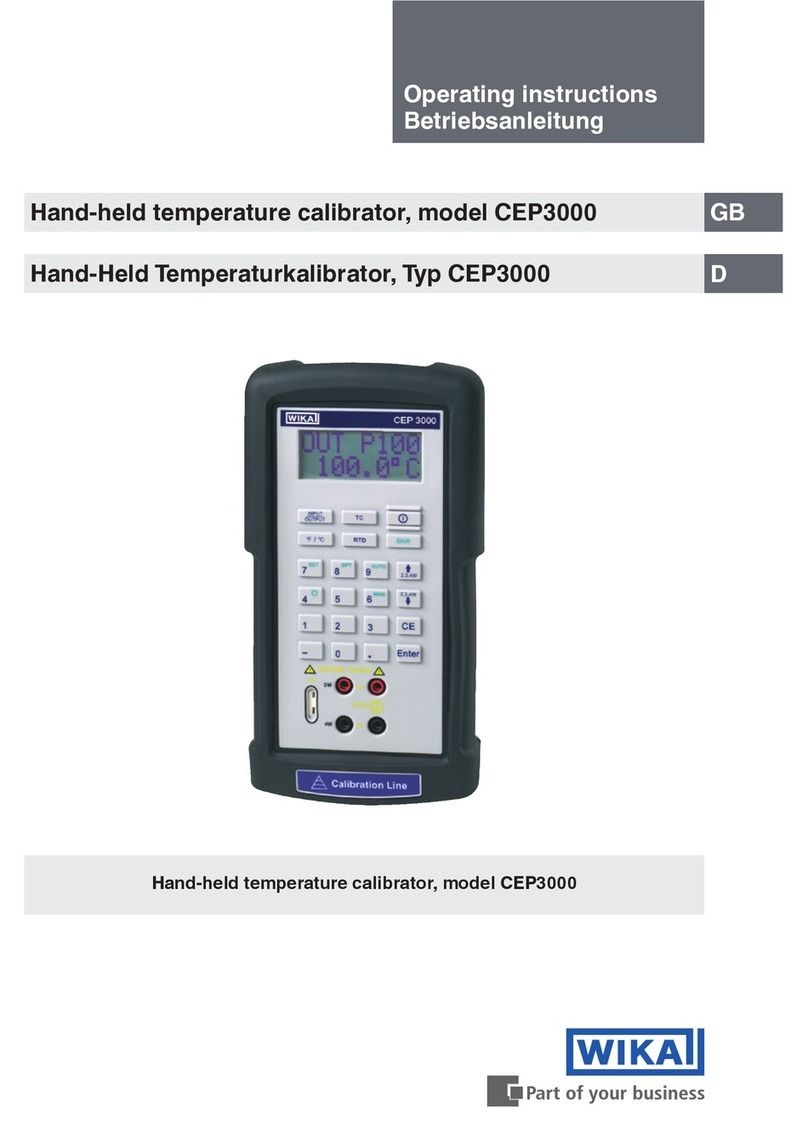
WIKA
WIKA CEP3000 User manual

